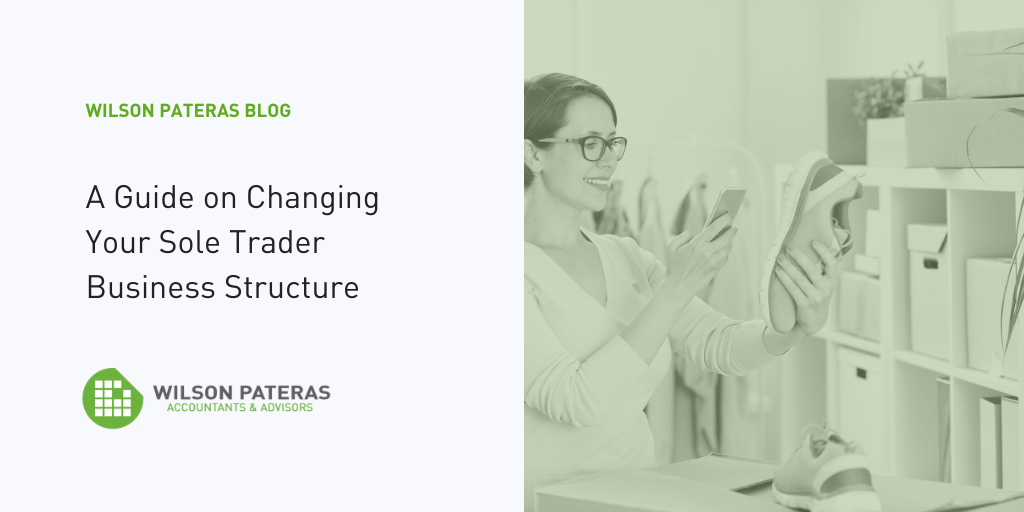
The decision to change from a sole trader business structure to a company is a major one. It is important to understand the differences between the two, as well as all the reasons why you should (or should not) do it.
This information will help you to decide whether it is the right decision for you and your business. Independent professional advice can help you to make the right decision. If it is the right decision for you to change to a company structure, then you will also need to know how to do it, and once again, you will need professional assistance.
How a sole trader structure differs from a company structure
The following table provides a summary of the pros and cons of each structure.
| Sole Trader Structure | Company Structure |
| Pros | Pros |
| You have control over your business decision-making | The company is liable for any business debts in most circumstances, subject to the Corporations Act 2001 (Cth). |
| You receive the tax-free threshold of $18,200 | The base company tax rate is 25%, which is lower than the marginal tax rate if you earn more than $45,000. |
| You have no formal financial reporting obligations and your tax affairs will generally be less complex. | Cons |
| Your business income can be deposited directly into your personal account and withdrawn at any time. | Any other company director or shareholder beside you will have a degree of control in business decision-making. |
| You are eligible for a capital gains tax (CGT) discount | You are not eligible for the tax-free threshold and will pay tax on all your company’s net income. |
| You are not required to have a governance plan. | You have formal and annual financial reporting obligations and your tax affairs will generally be more complex as you will need to lodge both a company and an individual tax return. |
| Cons | Your business income will be deposited in a company bank account and you will need to draw wages/director fees, depending on your structure. |
| You have unlimited personal liability for any business debts | You are not eligible for a general 50% capital gains tax (CGT) discount. |
| You pay tax at your marginal rates. Once you start earning more than $45,000 per year, you will be paying 32.5% tax plus the 2% Medicare levy | You are required to have a governance plan. |
Good reasons to change from a sole trader to a company structure
Good reasons to change from a sole trader to a company structure include:
- Your business has grown (or has the potential to grow) to a size where it will provide you with greater tax benefits.
- You want to reduce your level of personal financial risk in your business.
- Your business could benefit from the skills sets or finance that additional owners/directors can bring.
Good reasons to keep your sole trader structure
On the other hand, good reasons to keep a sole trader structure include:
- You want to keep your high level of control over your business.
- Your business is small and unlikely to grow significantly.
- You do not want the extra responsibilities that come with being a company director.
If you would like advice in relation to your business structure, please contact us to book a meeting. Our specialist accountants can assist you in the decision and help determine which option would be more beneficial for you and your circumstances.
This content has been prepared by Wilson Pateras to further our commitment to proactive services and advice for our clients, by providing current information and events. Any advice is of a general nature only and does not take into account your personal objectives or financial situation. Before making any decision, you should consider your particular circumstances and whether the information is suitable to your needs including by seeking professional advice. You should also read any relevant disclosure documents. Whilst every effort has been made to verify the accuracy of this information, Wilson Pateras, its officers, employees and agents disclaim all liability, to the extent permissible by law, for any error, inaccuracy in, or omission from, the information contained above including any loss or damage suffered by any person directly or indirectly through relying on this information. Liability limited by a scheme approved under Professional Standards Legislation.





